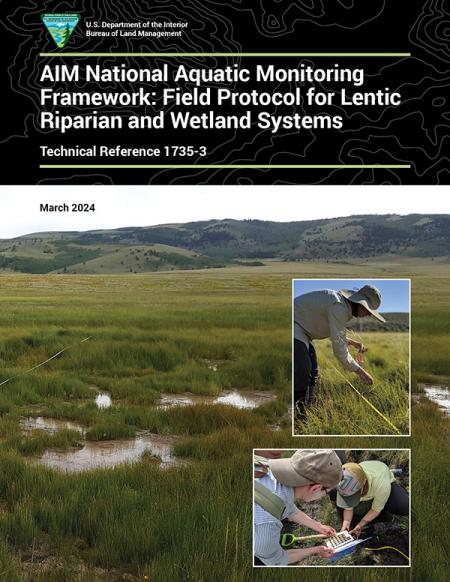AIM National Aquatic Monitoring Framework: Field Protocol for Lentic Riparian and Wetland Systems

Technical Reference 1735-3
The “Field Protocol for Lentic Riparian and Wetland Systems” was developed jointly by specialists from the Bureau of Land Management (BLM), U.S. Forest Service, and science partner Colorado Natural Heritage Program of Colorado State University. The protocol was developed in response to requests from land management personnel for standardized monitoring techniques that can be used to determine the condition, track trends, and measure the annual use of vegetated riparian and wetland areas, sometimes referred to as lentic riparian-wetland systems. This protocol is applicable to assessment and monitoring questions at various spatial scales, from fine scale (e.g., site, pasture, allotment) to broad scale (e.g., ecoregional, state, national). A multiscale approach ensures consistency across scales and allows local data to be viewed in context and to inform questions at broader scales.
The goal of this monitoring protocol is to provide a standard way to monitor riparian and wetland resources on public lands. This protocol targets a broader sample population of riparian and wetland areas than other existing protocols and is tailored for public lands in the western landscape. Data collected using this protocol can be used to evaluate the effectiveness of land management actions on maintaining or improving the biological, physical, and chemical integrity of riparian and wetland areas in order to inform policy, planning, and state and federal regulations. The protocol was developed following principles outlined in the BLM’s “National Aquatic Monitoring Framework,” which recommends standardized indicators and associated field methodologies for monitoring aquatic environments consistent with the BLM’s Assessment, Inventory, and Monitoring (AIM) Strategy. However, the protocol can be used in any application where a standardized set of monitoring methods is needed for riparian and wetland areas.
